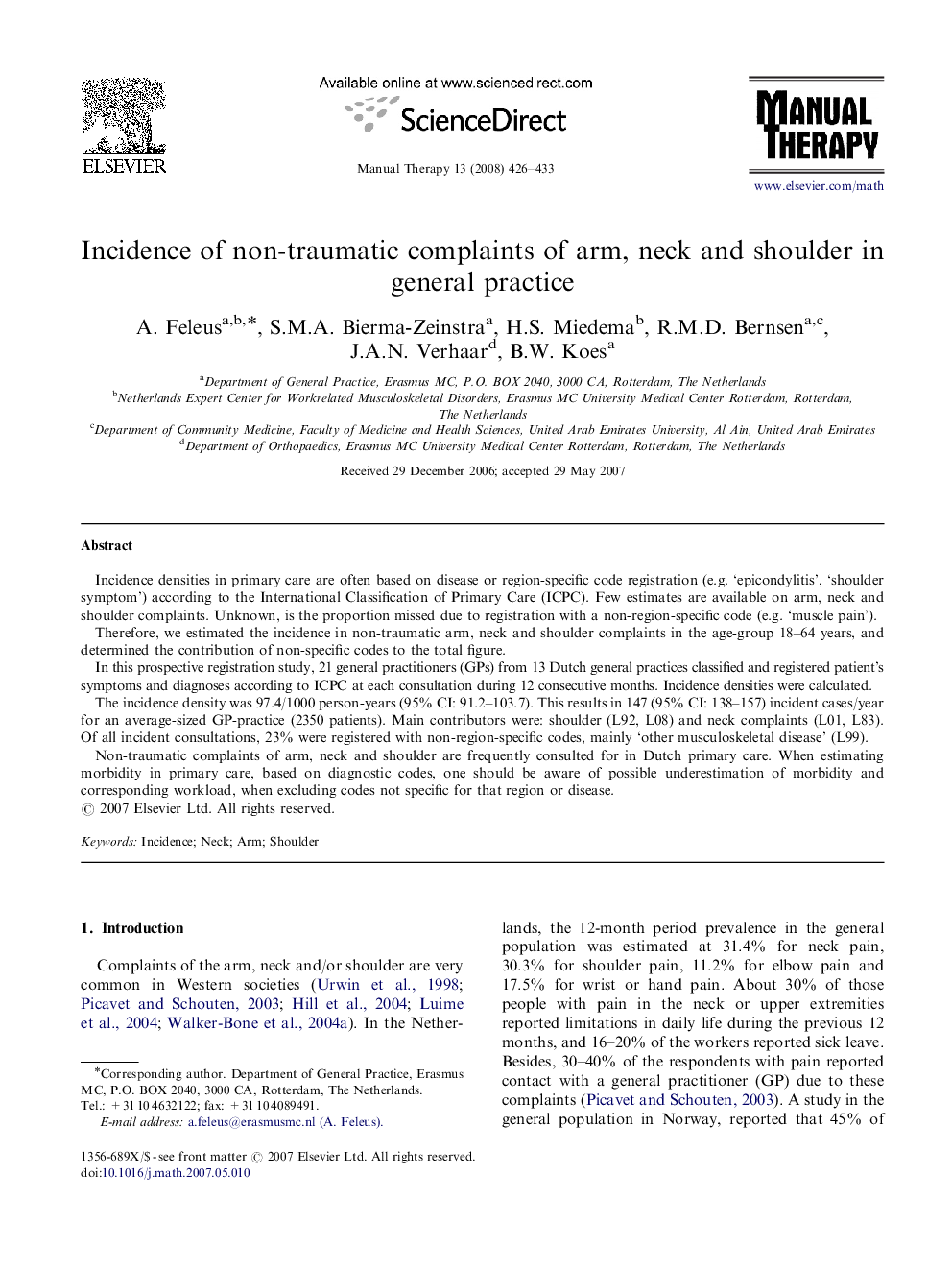| Article ID | Journal | Published Year | Pages | File Type |
|---|---|---|---|---|
| 2625693 | Manual Therapy | 2008 | 8 Pages |
Incidence densities in primary care are often based on disease or region-specific code registration (e.g. ‘epicondylitis’, ‘shoulder symptom’) according to the International Classification of Primary Care (ICPC). Few estimates are available on arm, neck and shoulder complaints. Unknown, is the proportion missed due to registration with a non-region-specific code (e.g. ‘muscle pain’).Therefore, we estimated the incidence in non-traumatic arm, neck and shoulder complaints in the age-group 18–64 years, and determined the contribution of non-specific codes to the total figure.In this prospective registration study, 21 general practitioners (GPs) from 13 Dutch general practices classified and registered patient's symptoms and diagnoses according to ICPC at each consultation during 12 consecutive months. Incidence densities were calculated.The incidence density was 97.4/1000 person-years (95% CI: 91.2–103.7). This results in 147 (95% CI: 138–157) incident cases/year for an average-sized GP-practice (2350 patients). Main contributors were: shoulder (L92, L08) and neck complaints (L01, L83). Of all incident consultations, 23% were registered with non-region-specific codes, mainly ‘other musculoskeletal disease’ (L99).Non-traumatic complaints of arm, neck and shoulder are frequently consulted for in Dutch primary care. When estimating morbidity in primary care, based on diagnostic codes, one should be aware of possible underestimation of morbidity and corresponding workload, when excluding codes not specific for that region or disease.
